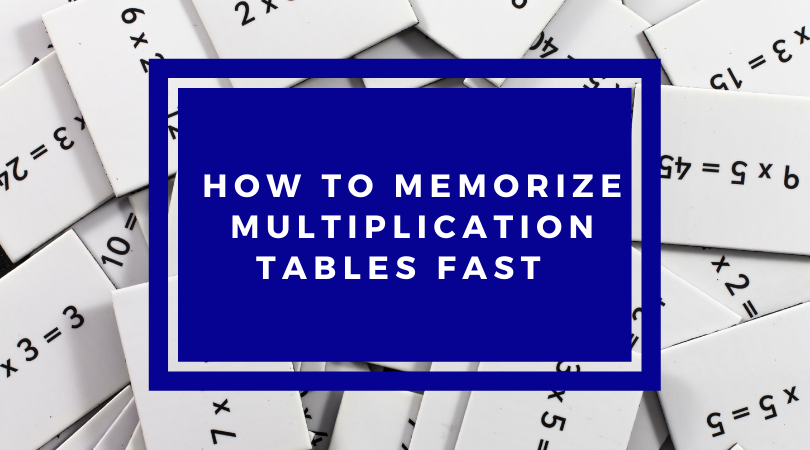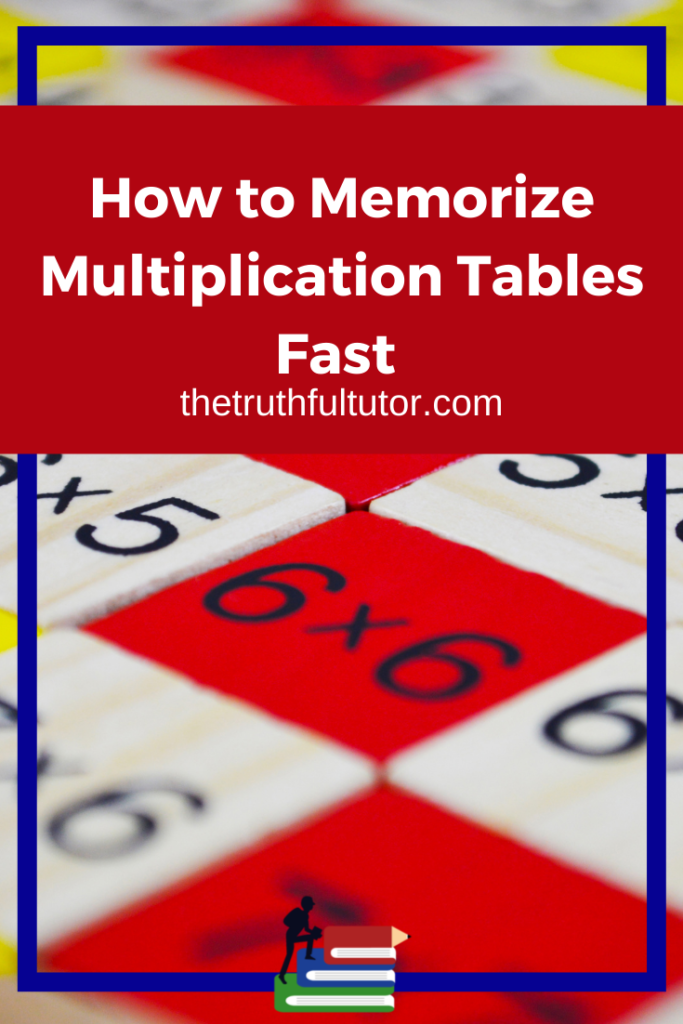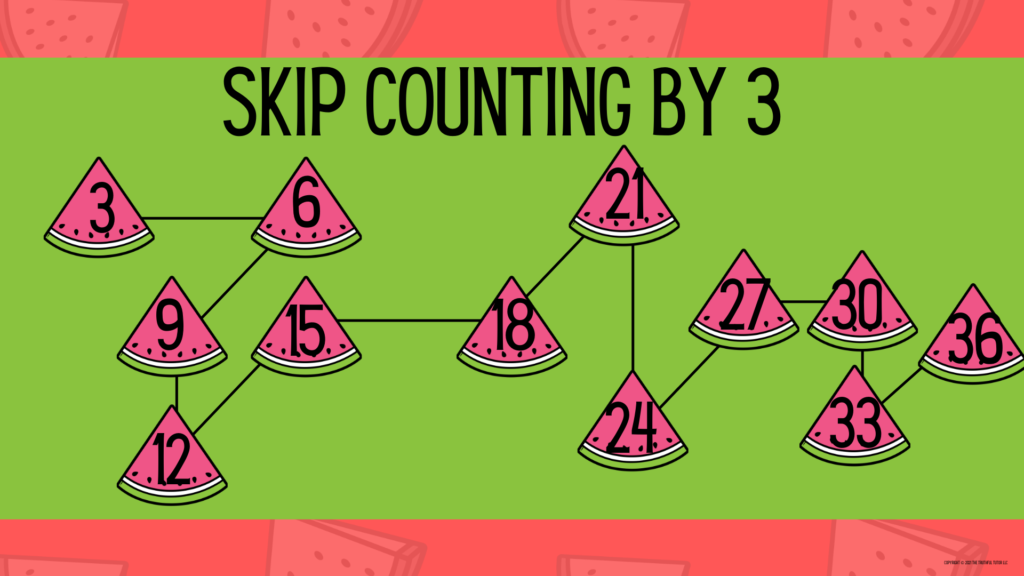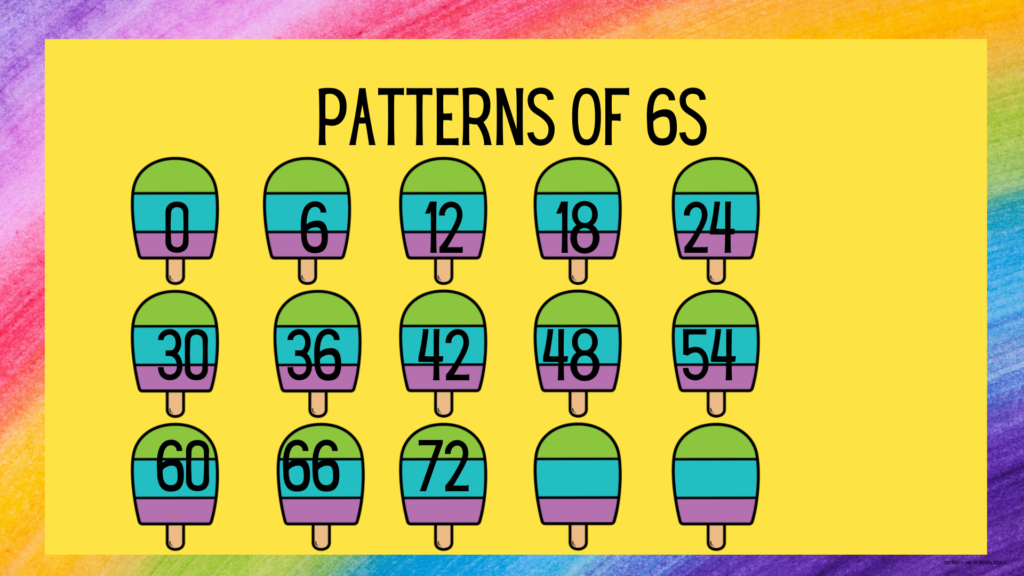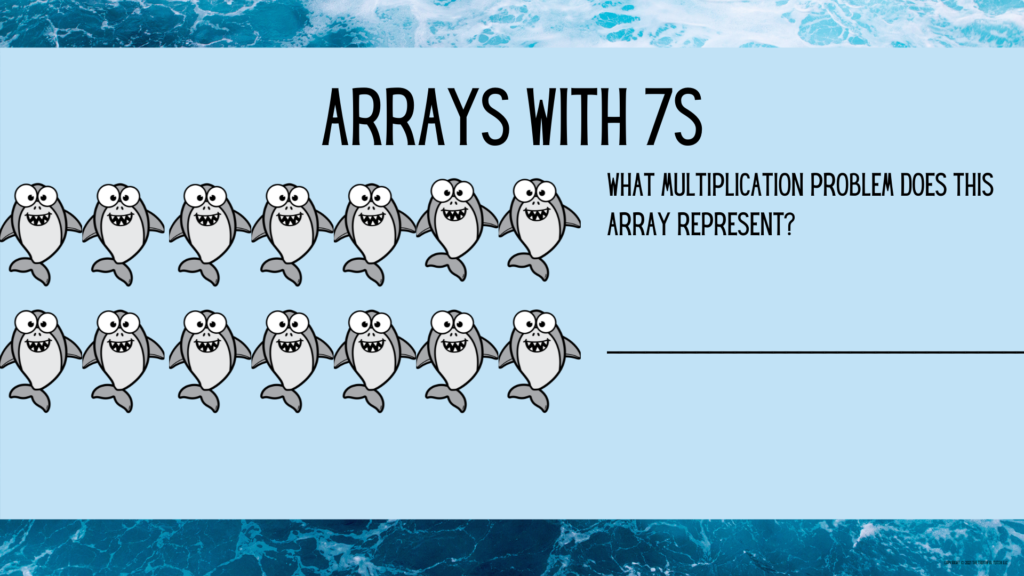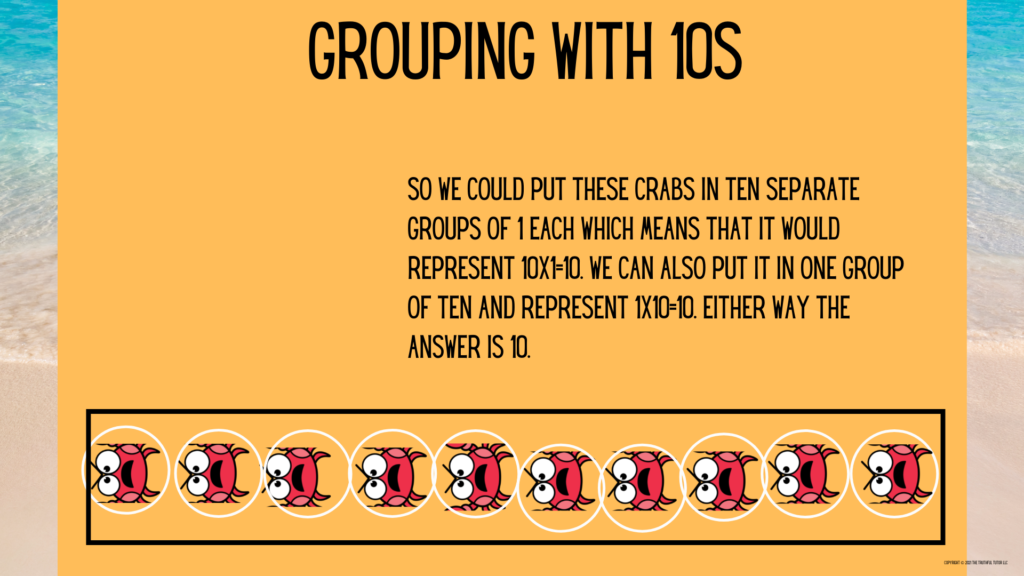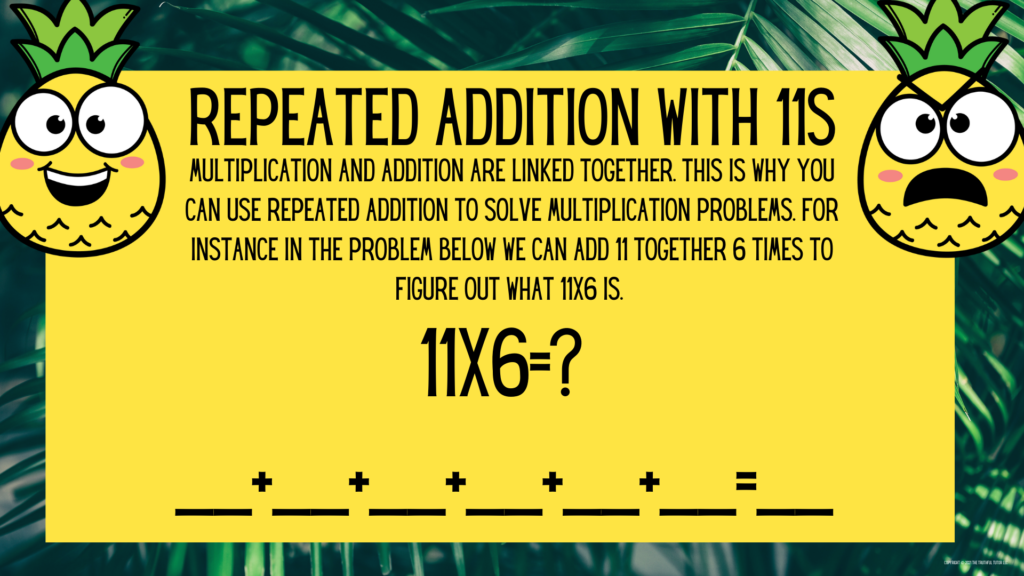How to Memorize Multiplication Tables Fast
Multiplication is one of the few things that I think that everyone should memorize if at all possible. The reason for this is that all math from the 3rd grade forward is heavily depended on multiplication. If kids do not know multiplication it will be hard for them to learn about equivalent fractions or how to find a common denominator. It will also make it hard to work with decimals and equations also will start to trip them up. I have seen that the students that I was able to have ample time to work with on multiplication started to have math as their favorite subject because it was easy to them now. For students who don’t memorize their times tables it is much harder for them. This is why pretty much every student who comes to me will work on their times tables. How fast students memorize their times tables will vary from student to student but there are lots of ways that you can help students know how to memorize their multiplication tables fast.
This post may contain affiliate links for full disclosure click here
How to Memorize Multiplication Tables Fast #1 Learn the Strategies
The first thing that is essential when you are thinking about how to memorize multiplication tables fast is to learn the strategies of multiplication. Even if students do not go on to fully memorize their times tables these strategies are invaluable because students need to be able to find the answer if they don’t have it memorized. Learning these strategies will also help kids understand the concept as of multiplication in general. It will help them understand what multiplication is all about which on some levels is even better than having it fully memorized. If you are looking for a way to teach these strategies or have you students practice them I made a multiplication lesson plan bundle for you. It is the same lessons that I use in all my classes and I have found that students really love it and also memorize their multiplication tables fast when they use it.
Skip Counting
The first strategy is skip counting. This is usually the first step that students learn when they are starting to think about multiplication. I think that students should start skip counting by all numbers in the second grade and even in first or kindergarten they should be skip counting by 1, 2, 5, and 10. This can be a whole class activity counting together every morning. You can also have students fill in missing numbers on a pattern sheet.
In my class I will put up my multiplication lesson plan presentation for the day and then I have students count with me skip counting by a number up through 12 times that number. So if it is 3s we will count 3,6,9,12,15,18,21,24,27,30,33, and 36. Then on the next slide I have blank spaces and I have the students take turns at filling in the blank spaces for skip counting.
Patterns
Another strategy for multiplication is patterns. I have noticed that some of my students this doesn’t click with as well but others really get it. I like to focus on the number that is in the ones place and see how it repeated to know what number maybe coming next. Learning how patterns link together is also a great pre cursor to not only multiplication but division because kids will start to see the possibilities of numbers that another number can be divided into. The odd numbers are a little bit harder because their patterns are much longer (except 5 it’s pattern is short 0, 5). For the even numbers the patterns all form some variation of 0,2,4,6,8. Above you can see a little bit of the pattern slides in my multiplication lesson plans that I use.
Arrays
The next multiplication strategy that you should be teaching if you know how to memorize multiplication tables fast is arrays. Students also need to know how to put these together for the state tests. So this multiplication strategy is super important to put into your multiplication lesson plans. I always start by teaching arrays by telling students that the number of columns up and down is the first number in the multiplication problem and the number of rows is the second. Some tests get picky about which number goes first though I’m not quite sure why. However, we don’t want them scoring low on tests because they mixed them up.
Arrays are great though because students can count up the total number of items so even if they are just starting multiplication they can start to see how it works and they can find the answer. A great way to facilitate array building is with mini erasers, or base ten blocks. Students can use the mini erasers to build arrays or base ten blocks as well and that is just helpful to make the process a little more hands on.
Grouping
Another multiplication strategy that is helpful is grouping. Grouping is similar to arrays but you do not have to have the items in columns and rows; they can just be together in a pile or a group with a circle around them. I have also noticed that grouping is a great way to teach students about factors. You can give them 12 items and see how many different ways they can split them into different sized groups. I.e. 1 group of 12, 12 groups of 1, 3 groups of four, four, four groups of three, two groups of six, six groups of two. You can do this with a lot of different numbers so they start seeing the connection between multiplication and factors.
Repeated Addition
The last multiplication strategy for how to memorize multiplication tables fast is repeated addition. Most students when they are starting multiplication have already mastered addition. If students have not mastered addition they need to master that before really working on multiplication and this strategy will help them
Want to Read More???
5 Math Games to Make Learning Fun
How to do Lattice Multiplication Step by Step
5 Ways to Teach Math Using Couponing
How to Memorize Multiplication Tables Fast #2 Multiplication Crash Course
So if you are a teacher in a classroom all the multiplication strategies above may be super helpful for you to think about to teach your own class. However, if you are a parent maybe you are just looking for someone else to teach your kids these strategies because maybe you don’t understand them yourself, you want an expert to teach your kids, or as I hear quite often my kids will just not listen to me. Well if you are feeling any of these things then I have a course where I will teach your students all these strategies and they will have a lot of fun playing games as well.
My multiplication crash course is a two week class that meets for 30 minutes daily. In it students will learn multiplication strategies for all the times tables through 12. Plus they will have so much fun practicing with boom cards, dice and other multiplication games. I have had so much fun teaching this class and I have seen students grow tremendously by taking it. Even today in the course I saw major improvement in my students’ memorization of facts over just a one day period. It is amazing to see how much they grow over the two weeks.
How to Memorize Multiplication Tables Fast #3 Daily Practice
Daily practice is one of the best things when you are thinking about how to memorize multiplication tables fast. Once students have learned the strategies and maybe even have taken my multiplication crash course. Daily practice is the next thing that they can do to reinforce the multiplication skills and really start to memorize them. I also like to instill a sense of competition in my students when it comes to daily practices so they are motivated to learn their multiplication tables so they can win the competition.
Boat Race
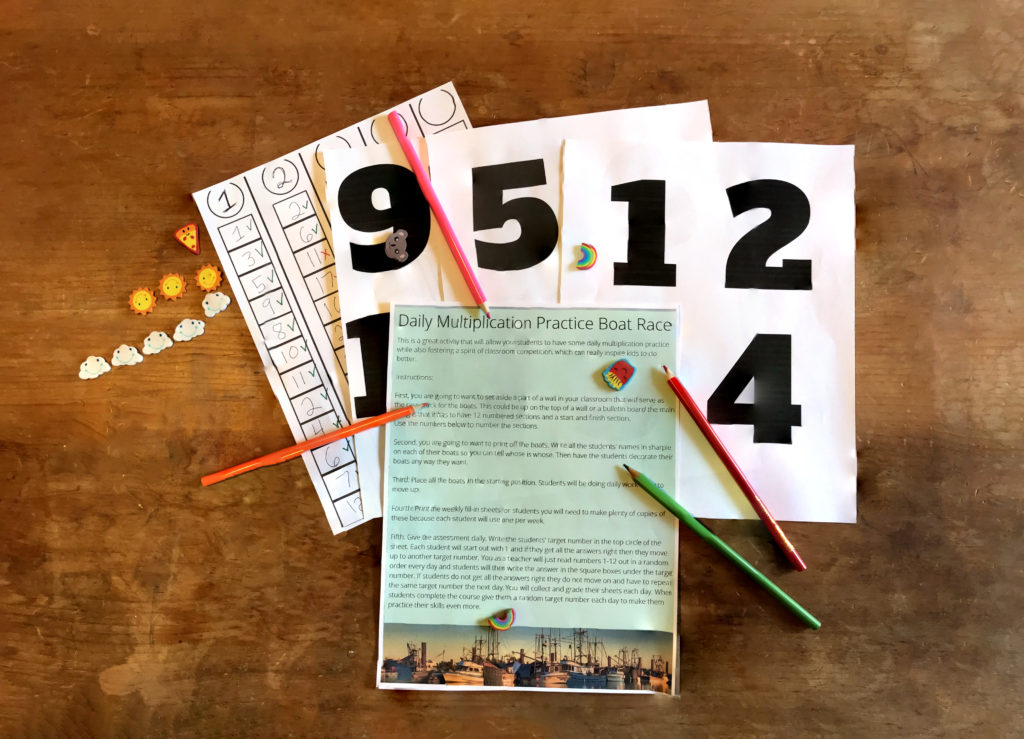
When I was in the fourth grade my fourth grade teacher had us practicing our multiplication tables daily. We practiced them in a competition style as well where all of us kids had boats and were trying to race to see who could get to the end first and have passed the test of all the times tables. Once you got to the end she gave you random numbers each day to multiply so you could reinforce your skills. Inspired by her ideas, I have included instructions, daily pages, and boats in The Ultimate Multiplication Toolkit. These are free to my subscribers all you need to do to get it is to click the picture below to add your email to my email list.
How to Memorize Multiplication Tables Fast #4 Multiplication Drills
The next thing that you need to do when you are trying to help people memorize multiplication tables fast is to do multiplication drills. These can be another form of daily practice or they can just be something that you do with your students every now and then to help reinforce multiplication skills. There are a couple ways that you can do math drills
Boom Cards
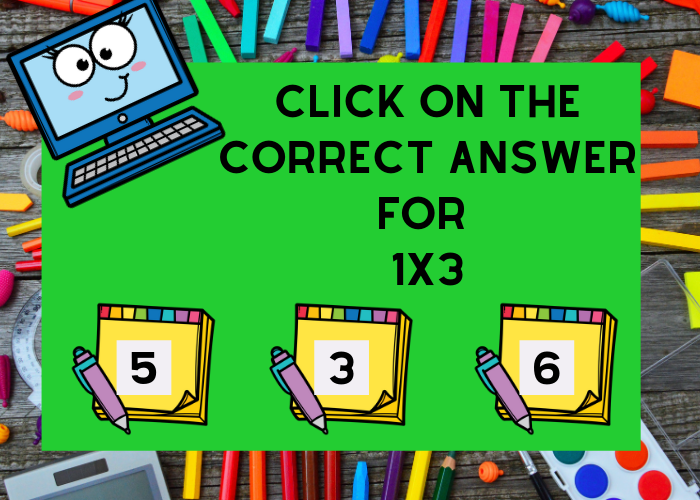
The first item that is useful when you are searching how to memorize multiplication tables fast is boom cards. Boom cards can be very useful for many reasons. They are so versatile they can be used for homework, math centers, group work, ipad and computer time, etc. They are also amazing because they are self-grading. Students get instant feedback and you don’t have grade work, but you can still see the questions that students are getting wrong and then you can do more work to review the numbers that students are struggling with.
Since I use multiplication drills so much I have made multiplication boom cards for every major holiday: Halloween, Thanksgiving, Christmas, Valentines Day, St Paddy’s Day, Easter, and one that can be used year around. I use these with my students year around and all of them love them. Their favorite things are seeing the different characters.
Printed Drills
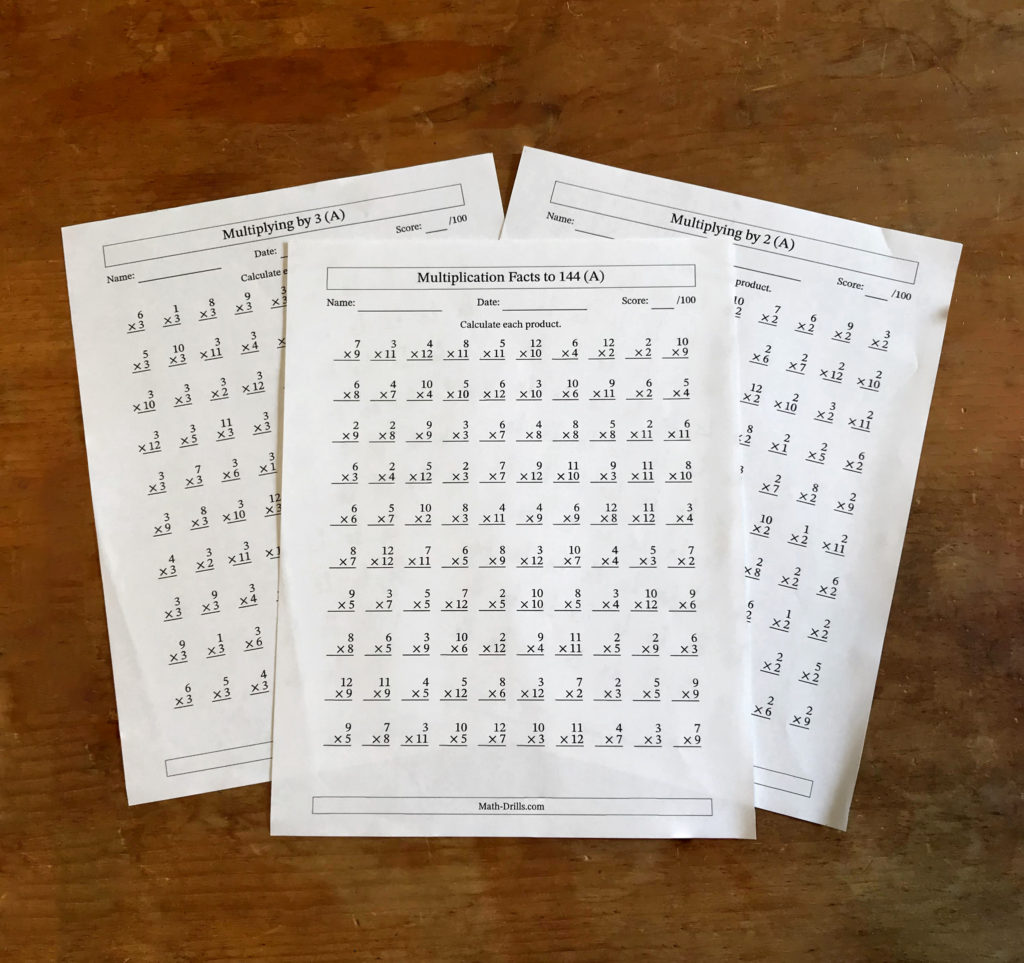
Another great way to memorize multiplication tables fast is to do timed math drills. This is farther down this list because kids should have at least the concept of multiplication so that they do not feel discouraged if they don’t finish a lot. You can start with one minute drills with 20 problems and move up to 5 minute drills with 100 problems. Sometimes when students see 100 problems it makes them worried which makes it harder for them.
I have found that this ultimately has made students memorize their multiplication facts the fastest if they already have a foundation in multiplication. One of my students’ fourth grade teacher had his students do 5 minute multiplication drills weekly. It was a competition to see who could get through the 12s first and those students who did got a rubber chicken for winning. It was called the rubber Chicken award. My student was actually really excited to get that rubber chicken. I have noticed though that the students in that class have been more advanced than other students and I think that the multiplication drills are a big part of that.
How to Memorize Multiplication Tables Fast #5 Multiplication Games
One of the last tactics that I use when I am helping my students memorize their multiplication tables fast is to play multiplication games. Students love playing games and it doesn’t feel like work to them. When they are trying to beat levels I see that they try to go faster and faster, and this helps them memorize their times tables because that is really the only way that they can beat the levels faster. Below are some of my favorite games that will make sure your kids know how to memorize multiplication tables fast.
Multiplication.com
Multiplication.com is my favorite place to go to find some multiplication games. My students’ favorite currently is cone crazy. In this game students serve ice cream to penguins based on the multiplication problems that the penguins give them. There is a similar game that involves students giving fish to kids based on the multiplication problems that the kids gave them. There are plenty of other games as well on this site. You can also find division, addition, and subtraction games as well.
ABC ya
Another great website to find multiplication games is ABC ya. These games are a little bit more advanced and have different aspects of game play. Some students really like the games on ABC ya and others prefer multiplication.com. My favorite game on ABC ya is Multiplication Mine. Students have to match up chains of gems to clear them and do the multiplication problems that come from those gems.
Dice
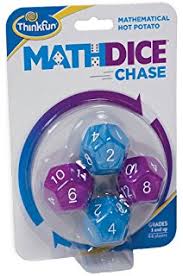
Some physical items that can be used as games for multiplication are dice. Some of the best are Math Dice and Math Dice chase. These will have students multiplying and competing with each other to complete multiplication problems. There are several types of dice that you can use for multiplication problems. If you have traditional 6 sided dice that will help students multiply their 1-6. If you have 9 sided dice that will take you up to 9s. 12 sided will take you up through 12s. Lastly, 20 sided dice can help students learn double digit multiplication when your kids get there.
If you don’t have physical dice there are also digital dice on toytheater.com. There are all different types of dice on there. For any of the dice games you are going to need at least 2 dice for each student that is playing the game. Students can also share dice if needed.
There are so many ways to memorize multiplication tables fast. I hope that some of the ideas above were helpful to you. If this was helpful please consider sharing it with your friends so they can benefit as well.

